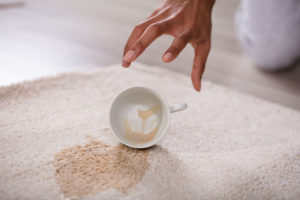How to Clean Oriental Rugs

Oriental rugs are made in countries of Asia. They refer to a broad range of floor coverings. The most prolific rug-making countries are India, China, Turkey, and Iran. References are made to Caucasian rugs. They are made in the Caucasus Mountains between the Caspian Sea and the Black Sea. Recently, Southeast Asian countries such as Vietnam began exporting Oriental rugs they have created.
Oriental rugs are made of silk, cotton, or wool; and are constructed by hand. They are designed to tell stories. Different patterns symbolize the history of a region and life events. Different areas and countries use some primary motifs. The motifs are a means of determining where the Oriental rug was made.
How They Are Made
Many techniques are used to craft Oriental rugs. All quality Oriental rugs are hand knotted. Among the most common methods of rug creation is the use of a simple flat loom. The craftsman forms a foundation of sturdy wool, silk, or cotton fibers called the ‘warp.’
The ‘weft’ consists of cross fibers tied to the foundation to form a pattern. In every inch, there are 16 to 550 knots. Quality increases with the number of knots. A dozen artists may work on a single rug. Depending on the quality, design, and size of the carpet, it may take months or years to complete.
Mistakes to Avoid
For homeowners who own an Oriental rug to have a rewarding experience, some errors must be avoided. A quality Oriental rug may last for decades. Some basic care is necessary to keep the prize floor covering from losing its luster. Consider
· Rotating the rugs
· Avoiding sunlight
· Vacuuming regularly
· Spot cleaning
Rotating rugs prevents excessive wear in one area. Rotate them at two to six-month intervals. Do not place the rugs in direct sunlight. It causes dyes to fade. Vacuuming not only removes debris and dirt but keeps fibers from matting.
Avoid getting fringe caught in the vacuum. If a spill or stain occurs, blot the excess liquid with a cloth or paper towel. Use club soda to loosen a stain if needed. Avoid other cleaners, detergent, or soap. They can damage rug fibers.
Homeowners often assume they can clean hand-woven rugs themselves or merely surface clean them with a vacuum. Surface care is essential but does not give a deep cleaning that allows the charm and beauty to shine through a layer of dust and stains. Professional cleaning is key to keeping the rugs looking vibrant.
Hire a Professional Saving money and mobility are reasons people give for cleaning oriental rugs, themselves. Advantages of hiring a professional include:
· Preserving its value
· Pick-up and delivery
· Thoroughness
· Access to the best cleaning products
Some Oriental rugs are passed from generation to generation. Professional care extends the beauty and life of the carpet. Most rug cleaning companies that specialize in the care of Oriental rugs pick them up and reinstall them.
They have specialized equipment that cleans and dries the rugs thoroughly. Commercial cleaning services use products designed for Oriental rugs. Most cleaning products and shampoos found in the retail market are too harsh for delicate natural fibers found in Oriental rugs. The carpets should be cleaned professionally at least once each year.